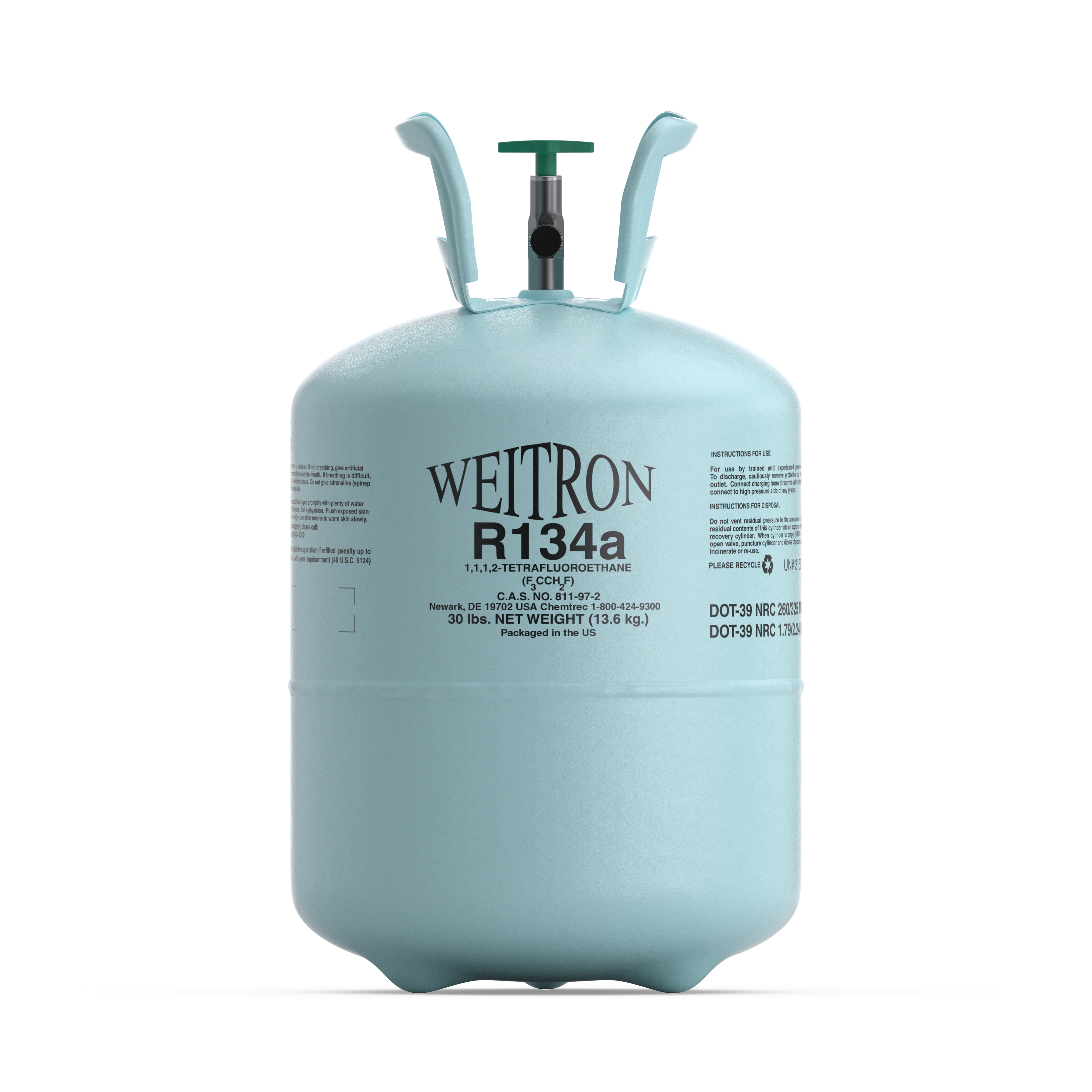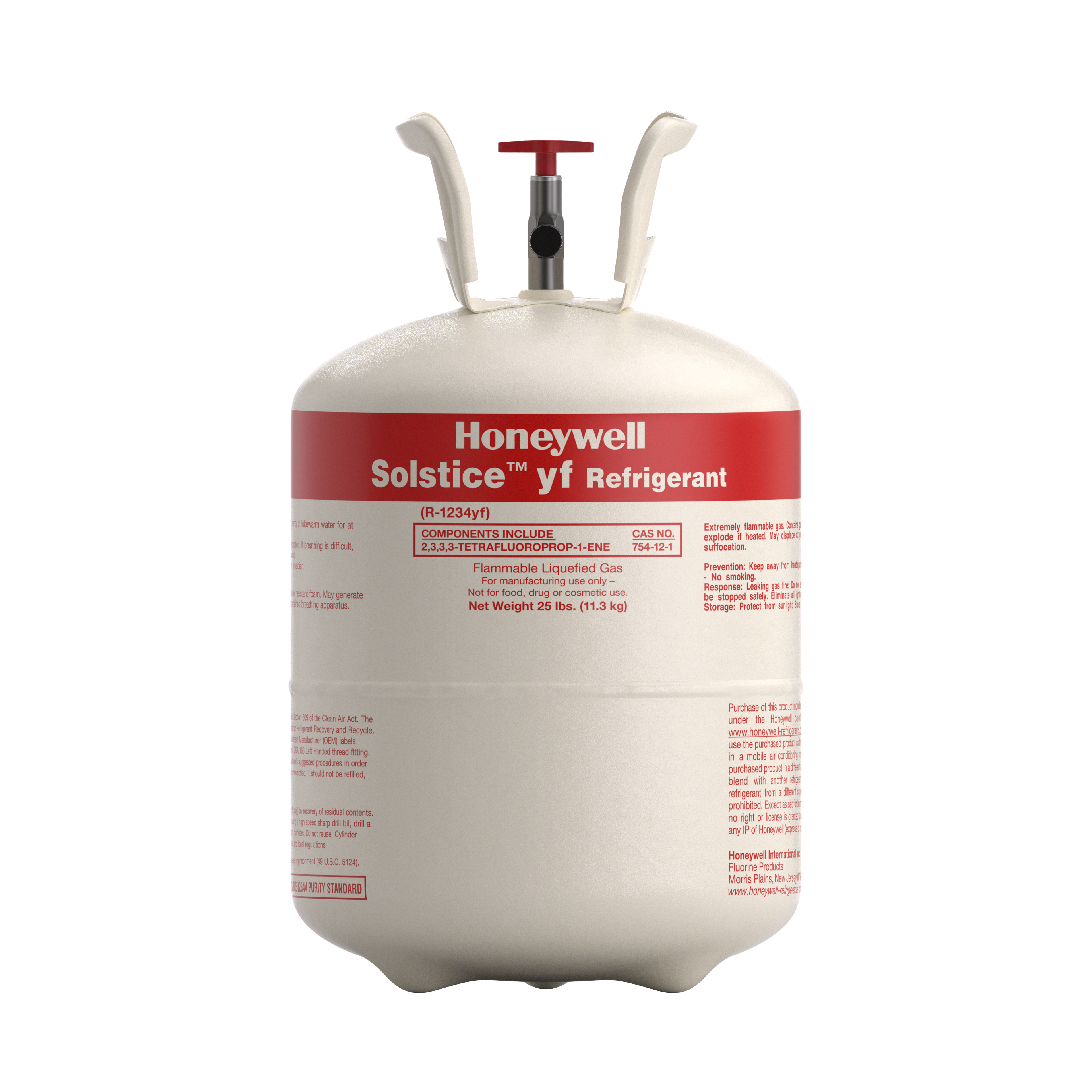A Comprehensive Guide to Understanding the AIM Act
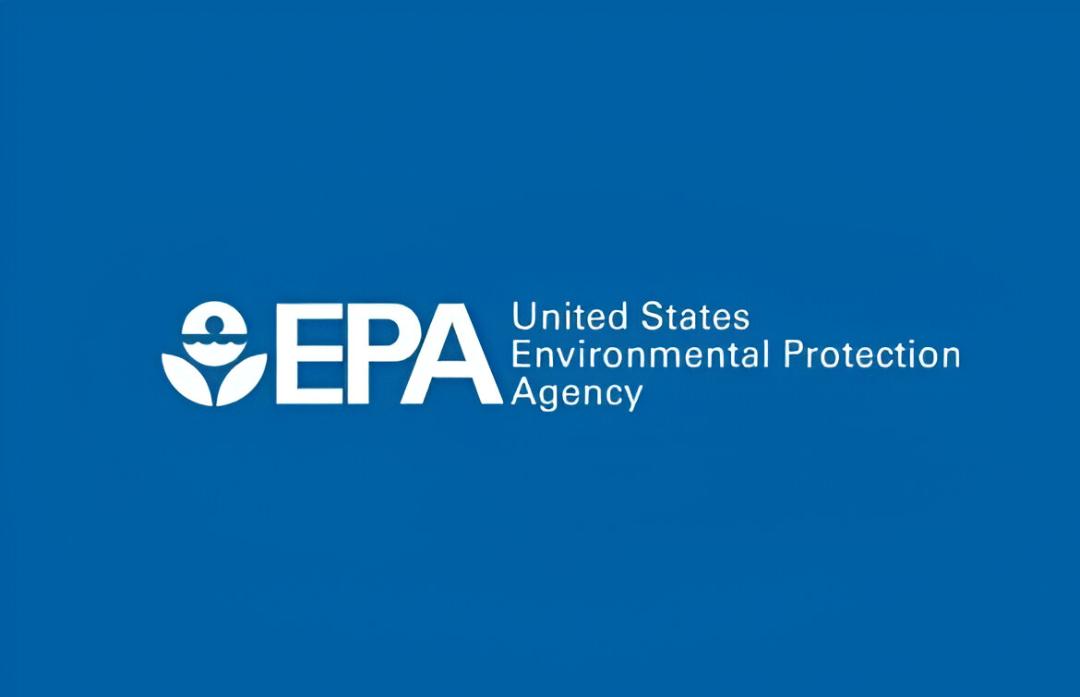
What is the AIM Act?
The American Innovation and Manufacturing Act (AIM Act) is a set of federal regulations that addresses the usage of hydrofluorocarbons (HFCs). The AIM Act is passed by the US Congress to meet the Kigali Amendment to the Montreal Protocol, an international agreement to phase down the production and consumption of HFCs by 80% – 85% by 2047. The AIM Act authorizes the EPA to reduce the usage of HFCs with a three-pronged approach:
Reduce supply and consumption: Phasedown of HFCs consumption and production
Facilitate transition of new equipment to more environmentally friendly alternatives: Technology transition
Minimize emission and encourage reclaim: Emissions Reduction and Reclamation (ER&R).
The AIM Act is complemented by state regulations that manufacturers, retailers, and end-users should also be aware of.
How does the AIM Act impact the refrigerant industry?
As HFCs are now prevalent in the refrigerant industry, there will be market volatility as HFCs are set to phase out in the next few years. The HFC phasedown schedule will limit the product availability while the technology transition program will drive OEMs to transition to lower-GWP refrigerants (e.g., HFOs). Additionally, the Emission Reduction and Reclamation Program (ER&R) will require end-users and technicians to utilize reclaimed refrigerant in certain use cases and return used disposable cylinders to prevent unnecessary emissions.
Why are HFCs regulated?
HFCs are greenhouse gases that contribute to global warming by absorbing energy and slowing down the rate at which the energy escapes to space. When HFC substances leak from a traditional A/C system, they remain in the atmosphere for a long time. As time goes, the HFC in the atmosphere traps heat, which leads to global warming. In fact, releasing R-410A to the atmosphere has a negative impact that’s over 2000 times worse than that of releasing carbon.
HFCs released into the atmosphere
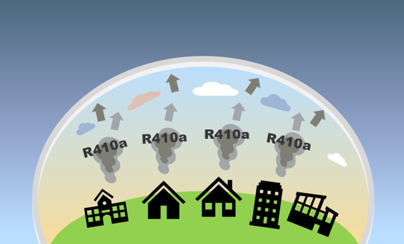
HFCs trapped in the atmosphere
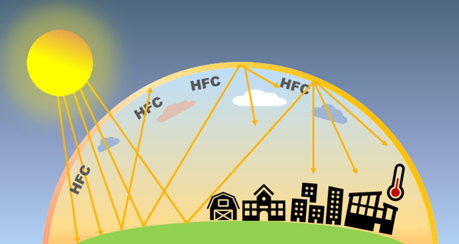
How is the impact of global warming measured?
Global Warming Potential (GWP) is the standard metric to compare global warming impacts among various gases. Specifically, it measures how much energy one unit of gas absorbs relative to that of one unit of carbon dioxide (CO2) over a hundred years. GWP is calculated and updated by the Intergovernmental Panel on Climate Change (IPCC). The standard GWP metrics used by most governmental agencies are from the fourth assessment report (AR4).
What are the benefits of the AIM Act?
The overall goal of the AIM Act is to minimize HFCs’ global warming impact to the environment. EPA also provides estimations of economic and environmental benefits driven by each of its programs:
Phasedown of HFCs consumption and production
The economic benefits of the phasedown approach is projected to be $272.7 billion from 2022 through 2050. In addition, in the final year 2036, this phasedown is expected to prevent emissions equivalent to 171 million metric tons of carbon dioxide (MMTCO2e), which is about 14.3% of greenhouse gas (GHG) emissions from all passenger vehicles registered in the United States.
Technology Transition
The Technology Transition Program is projected to reduce emissions by up to 876 MMTCO2e through 2050. Translated into monetary value, the climate mitigation benefits may reach $50.4 billion in 2020 dollars. Consumers and businesses would also contribute to the benefits and save up to $4.5 billion with the lower cost of HFC substitutes and improved energy efficiency in products.
Emissions Reduction and Reclamation (ER&R)
EPA estimates that the Emissions Reduction and Reclamation (ER&R) would prevent 120 MMTCO2e of HFC emissions, in addition to the expected benefits of the other AIM Act measures. In monetary terms, the net incremental benefits of this rule are estimated to be at least $6.9 billion from 2026 to 2050.
Benefits of the AIM Act
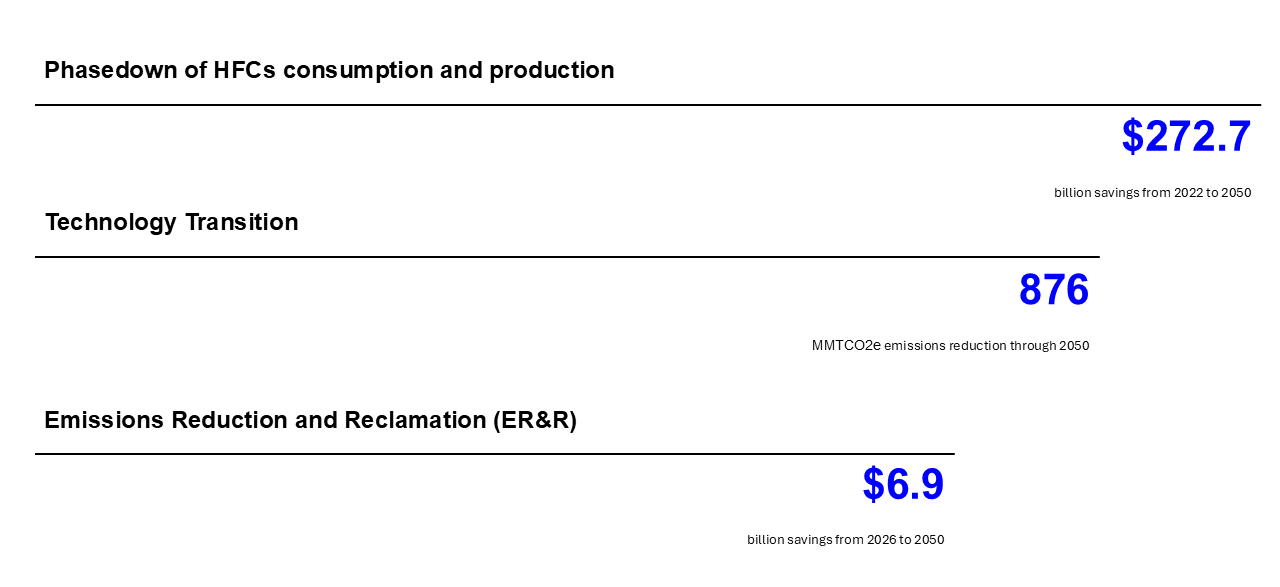
Related Regulations
View All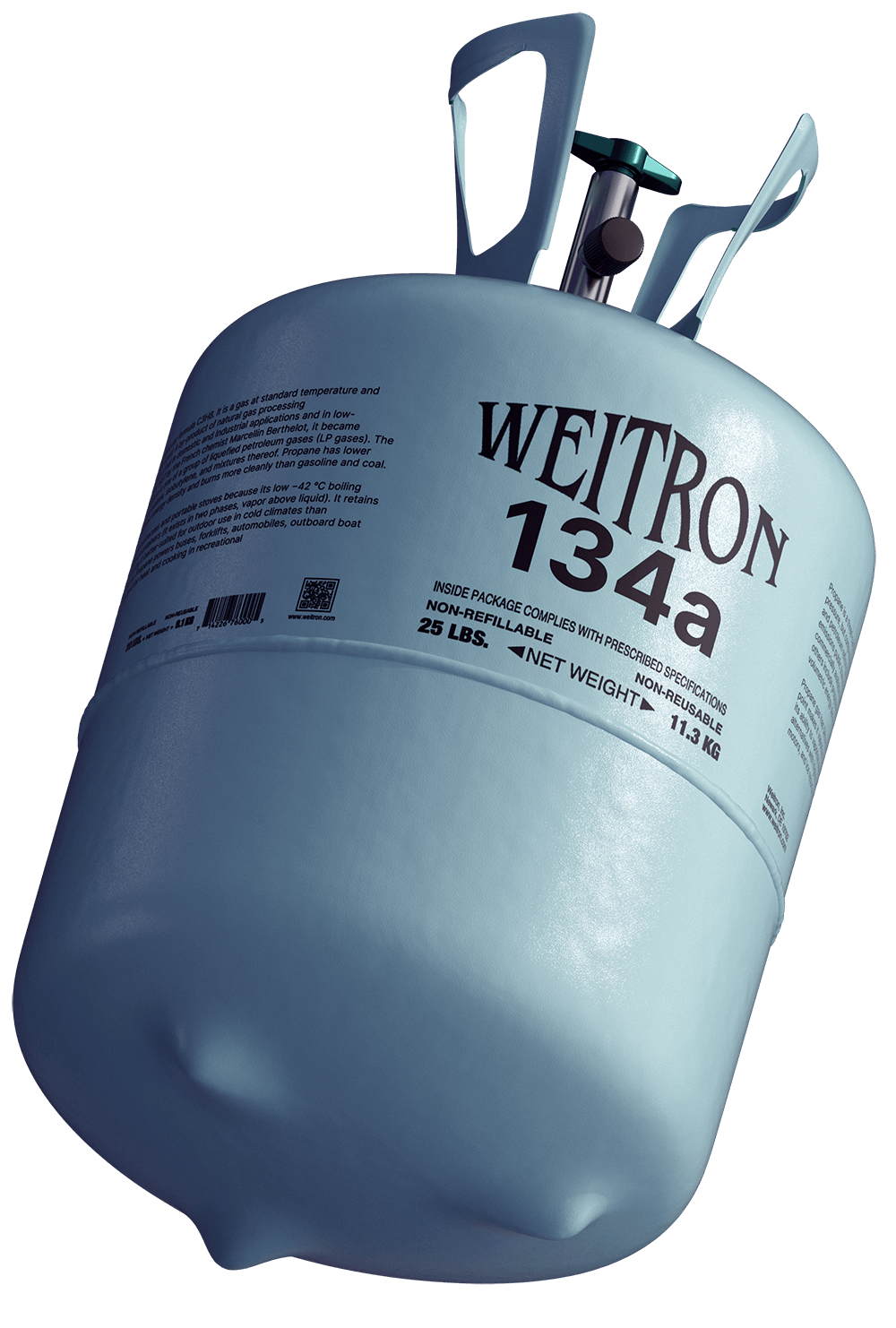
Become a Customer
Already know what products you are looking for? Just contact our sales team to place an order.
If You’re Not Sure Yet...
Not 100% sure what you need? Fill out our brief questionnaire to get started.
FAQ
Weitron serves a variety of industries, including HVAC, automotive, and refrigeration across residential, commercial, and industrial sectors. Our services encompass manufacturing, logistics, technical support, and reclaim solutions.
Aside from tools, all refrigerants are packaged in the USA. We source refrigerants both domestically and internationally, maintaining consistent quality standards for all products.
Weitron has offices and warehouse locations across the United States and China to ensure comprehensive service.
If you already know the products you need, contact our sales team directly. If you’re unsure, you can fill out our product questionnaire to receive tailored assistance.
Order Status: You will receive a shipment confirmation, and our customer service team is available 24/7 for support.
Delivery Time: If the product is available, we ship the same day that the order is received, with standard delivery within the USA taking 2–3 days. We also offer same-day delivery for urgent needs.
Returns: For any return processing, please contact our customer support team.
Certain refrigerants can contribute to global warming and ozone depletion. Weitron provides environmentally responsible refrigerant options, like HFOs and CO2, which have low Global Warming Potential (GWP), to minimize environmental impact.
Yes, Weitron is committed to environmental responsibility. We offer sustainable products, promote reclaimed refrigerants, and continually work to reduce greenhouse gas emissions through reclaim services and eco-friendly practices.
